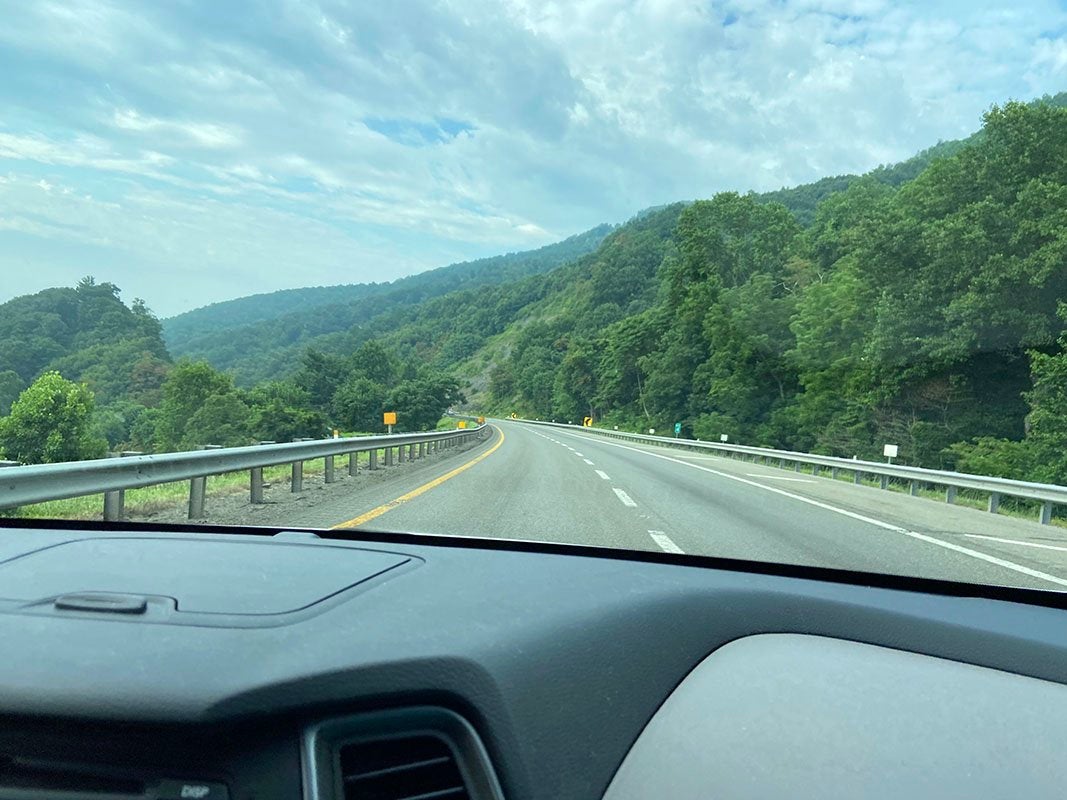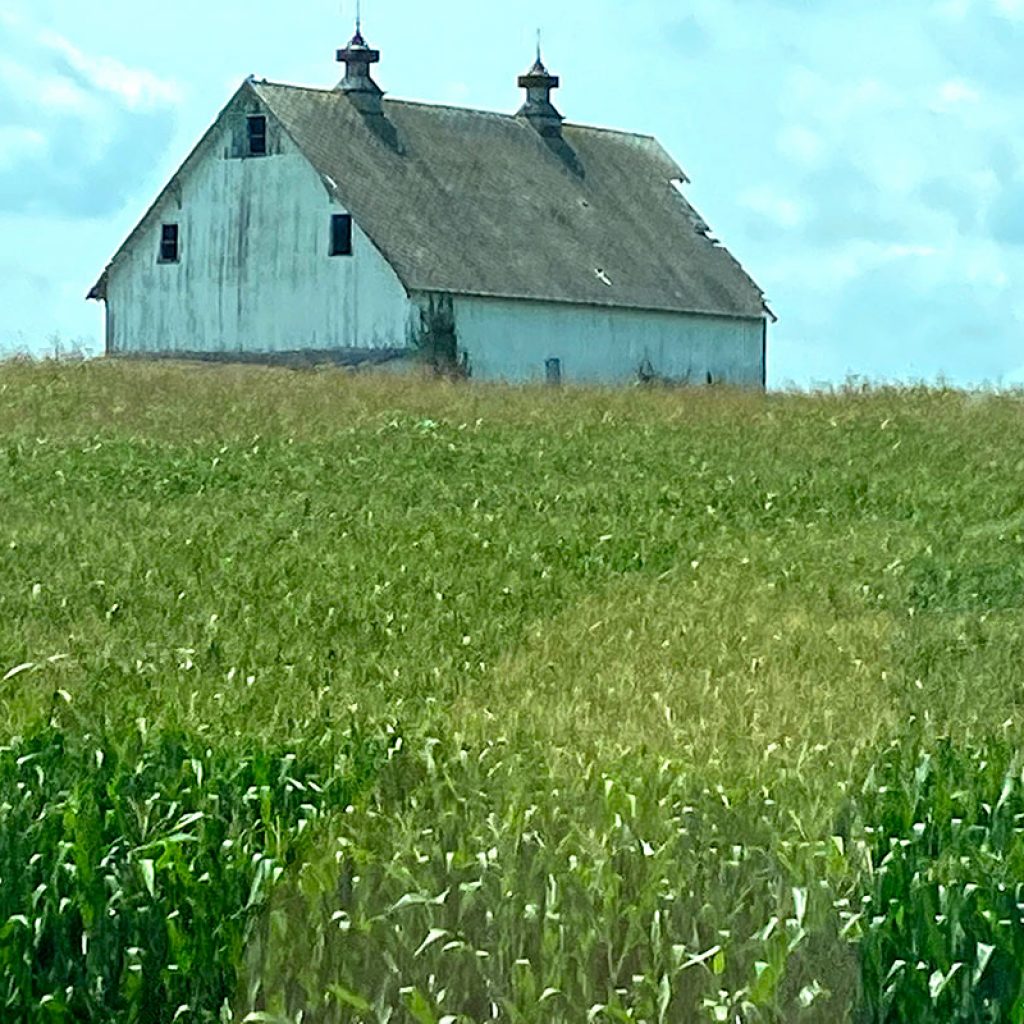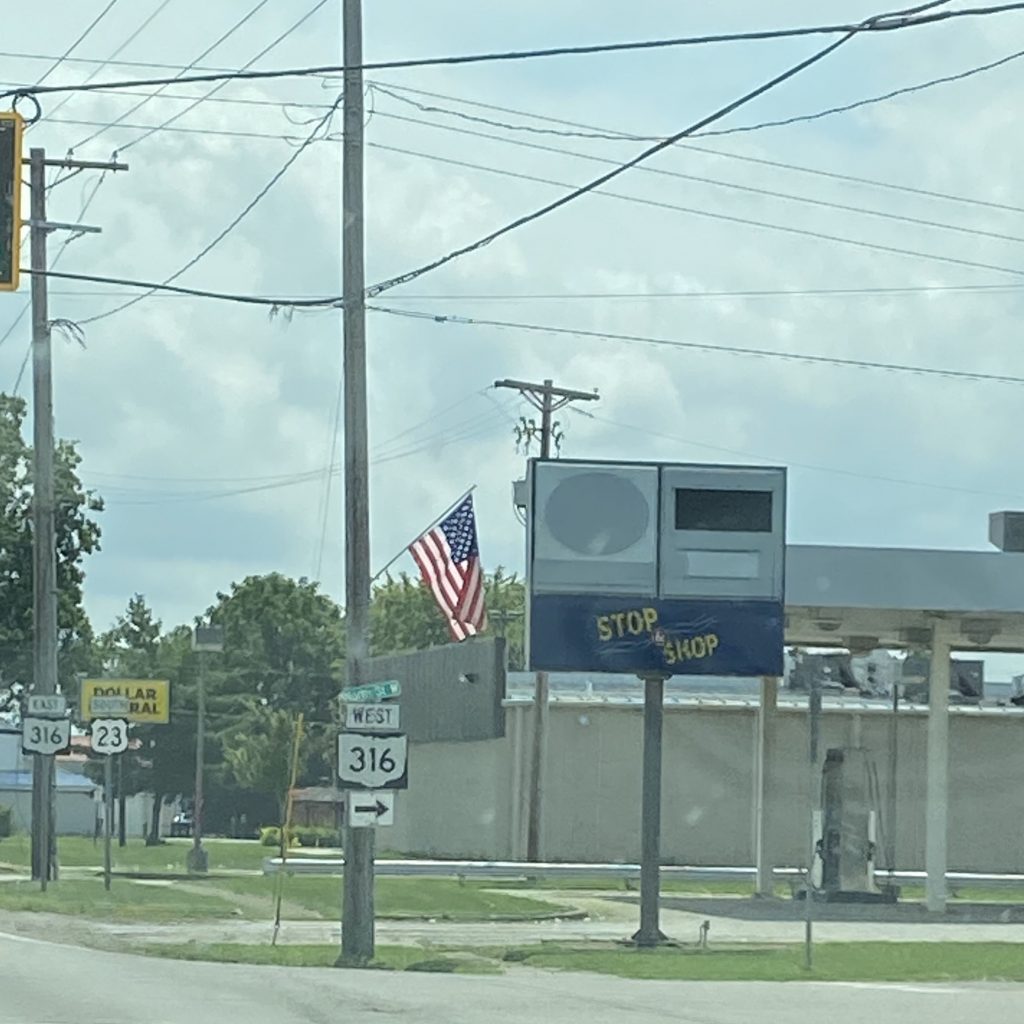If I had to write an essay on, “What I Learned on My Summer Vacation,” I think, after our most recent road trip through the Midwest, I’d write about corn and about Americans.
The two have more in common than you might think.
We drove though acres and acres of midwestern cornfields–well, in the interest of accuracy–miles and miles and miles and miles of cornfields.
MORE: Road Trip Adventures Continue
All the way from northern Kentucky to central Michigan, across the width and bredth of Ohio and into West Virginia, we drove through what seemed like one huge, lush, green field of corn. I was convinced we drove past at one corn plant for every man, woman and child in Kentucky, Michigan and Ohio combined. I was off by a few billion.
So, I looked up some corn statistics. I even did the math, but just for Ohio because the results for that state astounded me, and the numbers were getting too big.
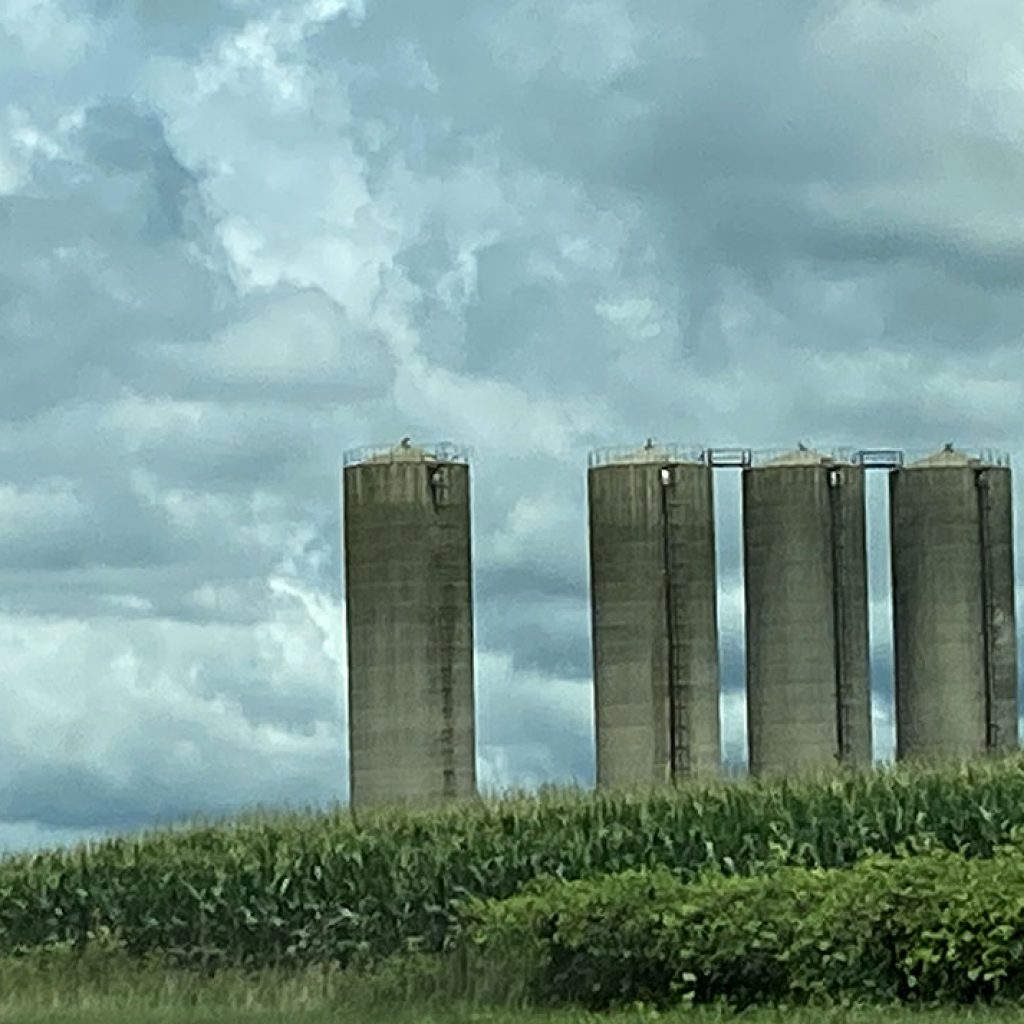
Silos and cornfields are common sights along Interstate 75 just south of Toledo, Ohio. 
More cornfields and gorgeous old-fashioned barns were more common along U.S. 23 outside Upper Sandusky, Ohio.
In 2020, the most recent year for which figures are available, Ohio farmers planted more than 3.5 million acres of corn, according to the Ohio Department of Agriculture website. One acre planted exclusively in corn can produce between 22,000 and 35,000 individual corn plants, according to the Maryland Department of Agriculture. So, that would mean Ohio could produce as many as 161 billion corn plants a year. Just FYI, the population of the world is 7.7 billion. That’s about 21 plants per person living on Earth produced just in Ohio.
Corn is America’s largest crop, according to the U.S. Department of Agriculture. American farmers in 2019 planted 91.7 million acres of corn, or the equivalent of 69 million football fields, according to the National Agricultural Statistics service. I didn’t do that math—too many zeros. A third of each year’s corn crop goes for animal feed, and another third to make ethanol. The rest is used as human food and for industrial purposes.
[adrotate banner=”54″]
Contemplating all this, I got to thinking that I bet no two of those corn plants are ever exactly alike. True, driving past on the interstate, those corn stalks all look alike. But they’re not. Each one is as individual as each person who had a hand in planting them, each person who will help harvest them and each person who will use them down the line.
That made me think about all the people I talked to people on the trip.
These are people I’d have a conversation with while we were waiting for a table at a restaurant or trying to decide whether one very still fish at Detroit’s Belle Island Aquarium might be dead or enjoying a ramble down a tree-lined road on a cool Kentucky morning before heading into breakfast at Shaker Village.
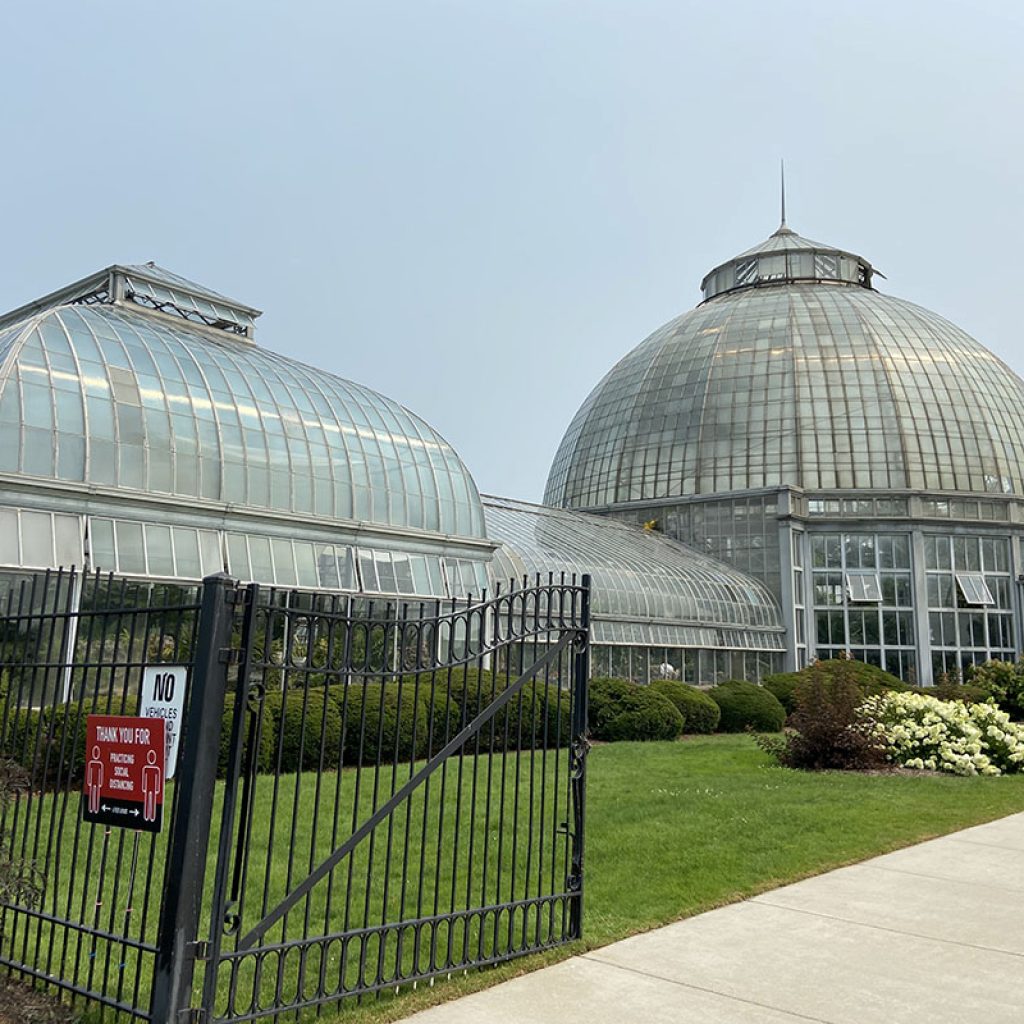
These folks talked about the same things: how glad they were to be out and about again, how concerned they are about the scarcity of service workers across industries like food service, when chip manufacturing will return to normal so car sales can return to normal. Maybe it’s because we’ve all just been through a pandemic, but we all seem to be on the same page about what problems need solving and what good things are happening.
Now, remember, these were all just regular people, just like you and me, not politicians, not radio or television talk show pundits and not political fanatics who can’t shut up and who’d like us to believe we’re a nation divided so we will continue to empower and enrich them. They were “We-the-People” people, and in my entirely unscientific survey, we all seemed to be on the same page about most everything. At least, we agreed about what needed solving, and we were willing to do some give-and-take in figuring out solutions.
All this crystalized on our last day in Detroit when we were “treated” to wisps of smoke from the forest fires in Oregon. That was another reminder that we’re all in this together. If smoke from as far as Oregon can travel all the way to Michigan, there’s no question that what one of us experiences, we all experience in one way or another.
And everywhere, I saw the American flag proudly flying. From here in Augusta all the way to Detroit and back, so many American flags. That, too, was proof that we all have more in common than not.
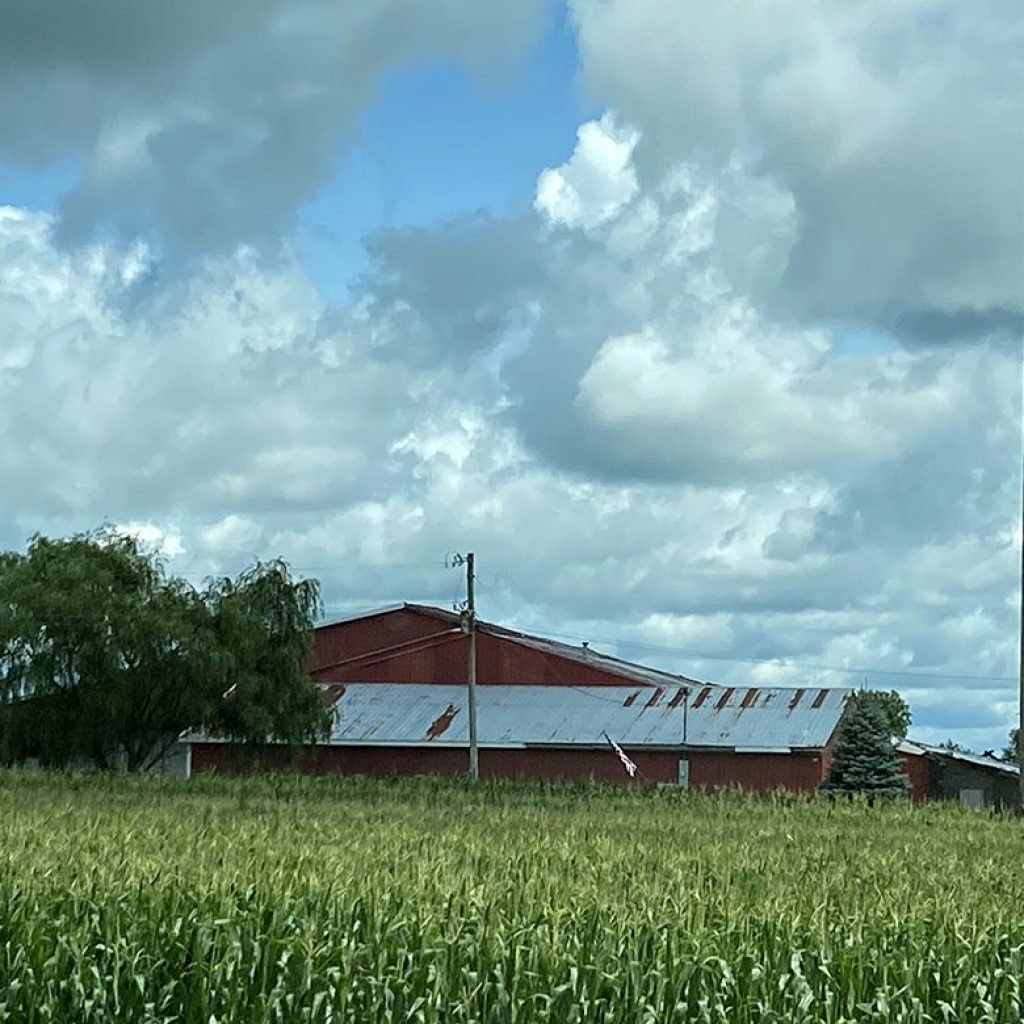
The most moving flag display I saw, mostly because COVID-19 has kept us from visiting family who live outside the United States, was at a riverfront park in downtown Detroit. Three American flags flew side-by-side, and across the river, an oversized Canadian flag waved back, a reminder that we’re not only part of a national community but a global one as well. Even though my husband’s middle sister lives on the Canadian east coast in Nova Scotia, we waved back at her flag and made a silent promise to go visit her as soon as travel restrictions allow.
We did run into some regional distinctions, too. When we weren’t driving through cornfields, we passed acres of what I’m pretty sure was alfalfa, something I haven’t seen in years. We came across one gorgeous, ready-for-harvest field of wheat–the proverbial amber waves of grain–growing outside of Upper Sandusky, Ohio. Strawberries were just coming in in Michigan, and their cherry season seems to mirror our peach season.
[adrotate banner=”19″]
Most places served unsweetened tea, and breakfast in Michigan came with home fries. Our only grits sighting was at a high-end grocery story that carried the stone-ground corn and at a “Southern” restaurant near the shores of Lake Michigan where we ate one night. The pulled pork I ordered at there had no barbecue sauce, and the grits in their shrimp and grits had no cheese. They didn’t make their biscuits with White Lily. That faux pas needs no further comment. Even in the people in Nevada knew to make their biscuits with White Lily.
Our last night in Detroit, we ended up in the basement of our friends’ home as a tornado rattled overhead. I knew tornadoes were common in Ohio, but I don’t think I ever knew Michigan was susceptible. Especially in July.
But, more importantly than those few differences are the commonalities. Everywhere I’ve gone this summer, I’ve gone under the same flag. Whether it’s been deeper into the Deep South, the desert Southwest, the southern Appalachians or the Midwest, Old Glory has waved above me. She has been my protector and a stalwart reminder that we are one country, one people, all in this together, no matter what “this” is. She is the guardian of our freedoms, and she probably sighs in exasperation with us on occasion.
MORE: Road Trips Can Be Magical Experiences
Road trips are valuable, I think, not just because they give us stories to tell but also because of what they teach us about ourselves and about our country. America is huge, but Americans, all of us, regardless of our backgrounds, are family. We have similar concerns, similar ambitions and, up to a point, similar outlooks. I’m proud that our country offers such–to steal a phrase from an unlikely source, Star Trek–“infinite diversity in infinite combinations.”
Debbie Reddin van Tuyll is Editor-in-chief of The Augusta Press. Reach her at debbie@theaugustapress.com.
[adrotate banner=”56″]

